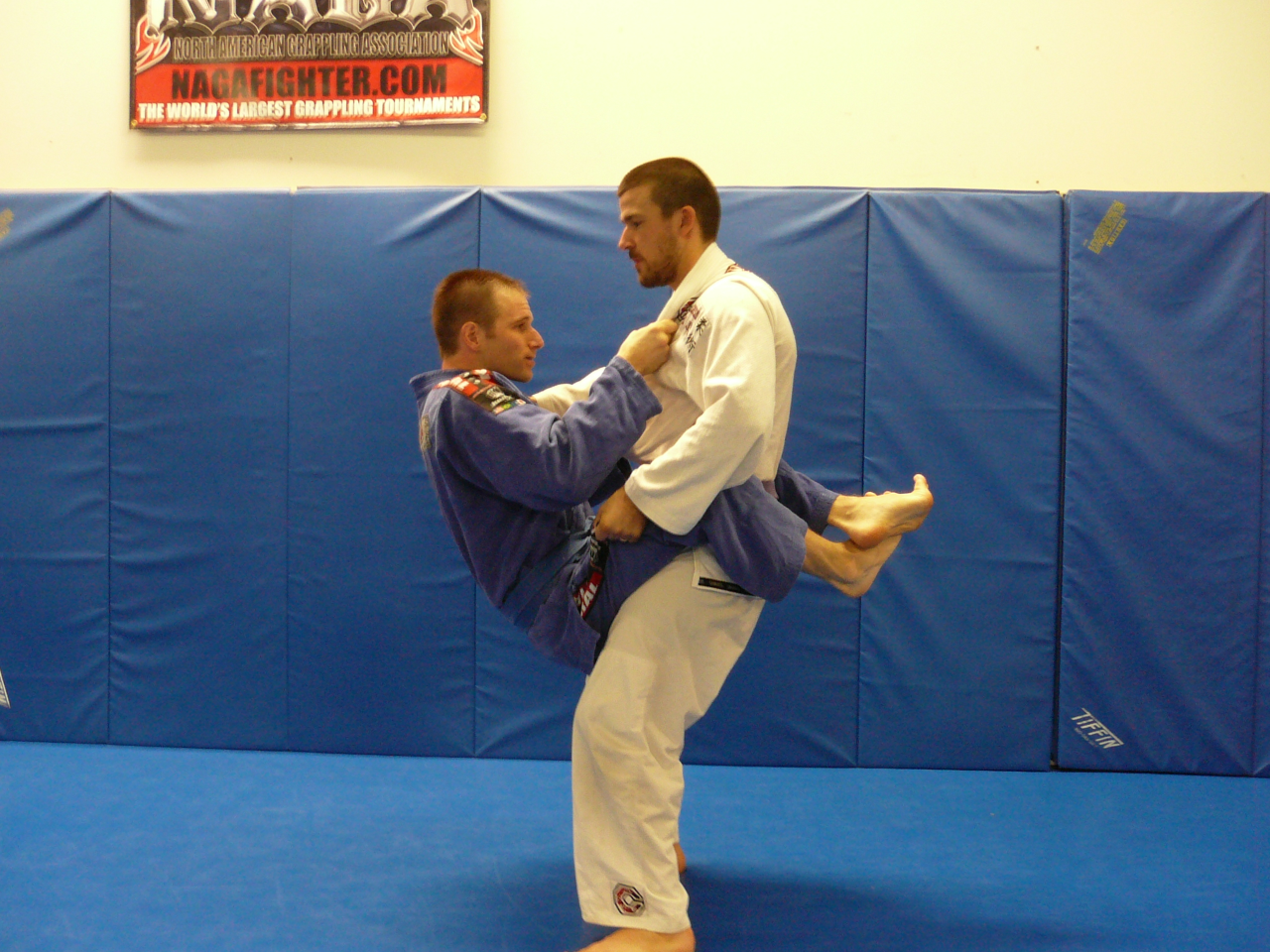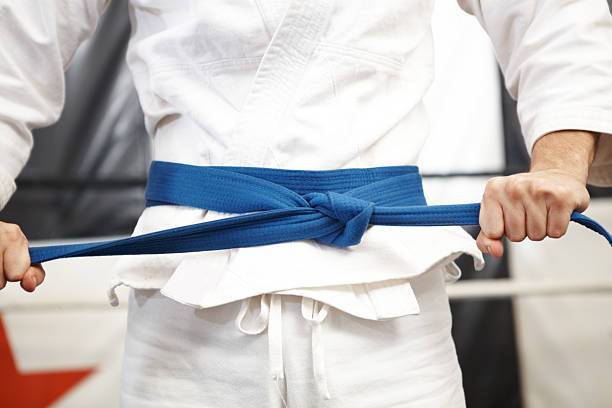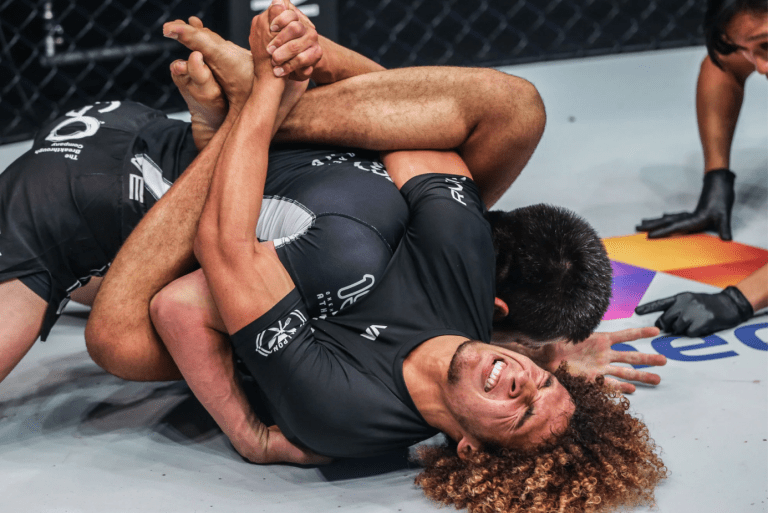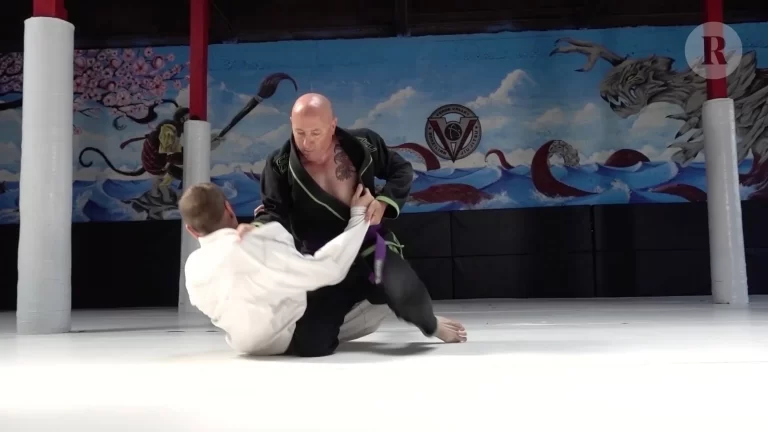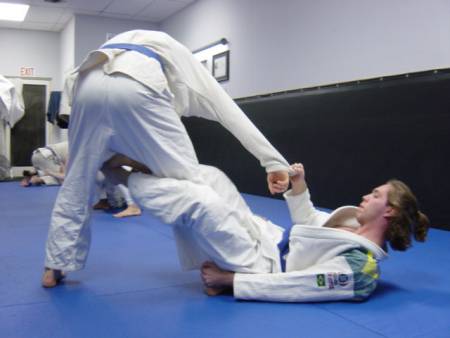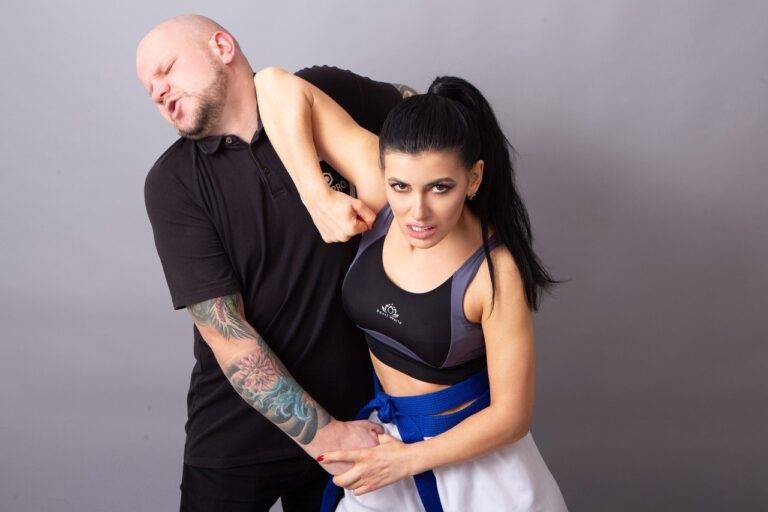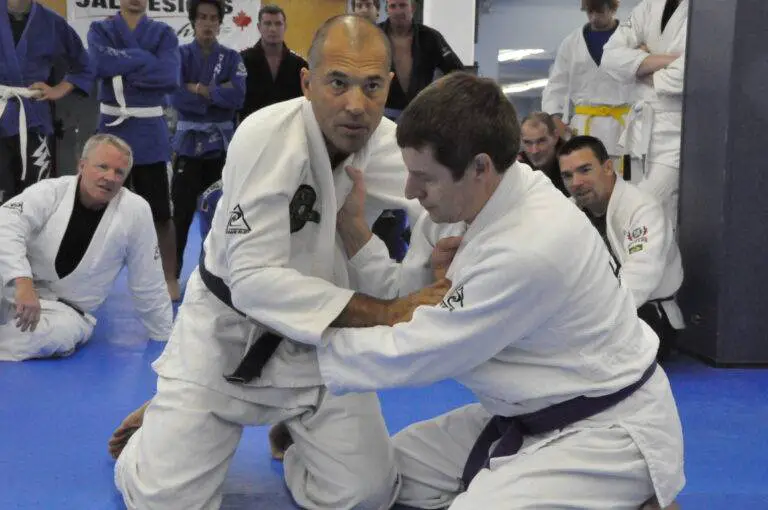What does pulling guard mean in BJJ?
In Brazilian Jiu-Jitsu (BJJ), the term “pulling guard” refers to a defensive technique used to bring an opponent to the ground in a controlled manner. It is typically used when a practitioner is unable to maintain a dominant position while standing and needs to bring the fight to the ground in order to gain an advantage or execute techniques from the guard.
When pulling guard, a practitioner will use their legs to wrap around their opponent’s waist and hips, pulling them down to the ground. This can be done from a standing position or while the practitioner is already on their back. The goal is to use the legs to control the opponent’s movement and create openings for submissions or sweeps.

Why would somebody pull guard?
While it might seem strange in a self defense situation (because you are voluntarily putting yourself on your back), pulling guard is an important technique in BJJ because it allows a practitioner to turn a defensive position into an offensive one. It allows them to use their legs and lower body to control their opponent and create openings for attacks. It is also a useful technique for practitioners who are smaller or weaker than their opponents, as it allows them to use their legs and leverage to control the fight.
While pulling guard can be a powerful technique, it is important for practitioners to be aware of their surroundings and to always be mindful of their opponent’s movements. In order to pull guard safely and effectively, you must practice the technique on a partner first. If not you risk a failed guard pull which may result in you ending up on your back or having your guard passed by your opponent.
How do you pull guard?
Here are the steps to take when pulling guard:
- Establish a grip on your lapel and/or sleeve (there are multiple variations of grips)
- Use your legs to wrap around your opponent’s hips and lower body – this can be done with either a jumping movement, or by first placing one leg on the hip first then bringing the other.
- Use your grips and legs control to pull your opponent down to the ground.
- As your opponent drops to the ground, close your legs around their waist to establish guard.
- Once on the ground, use grips to keep their posture down and setup techniques.
The below clip from Stephen Kesting shows a simple way to pull guard safely:
What can go wrong?
While pulling guard can be a good way to “bring the fight where you want it to be”, there are some risks to be aware of. Firstly, from a self defense point of view, pulling guard is not a wise tactic. Generally speaking, in an actual fight situation you should avoid anything that puts you on your back with an opponent in front of you.
There is also the risk of injury – if you don’t establish grips correctly or if you fall back to suddenly you can hurt your back or your head. So be careful and follow the correct technique when pulling guard.
What to do After pulling guard
There are many attacking positions that you can move towards from the guard pull. Depending on the type of guard you pull, different attacking, sweeping and submission options become available. Some of the most common guards that can be used with a guard pull include:
Closed Guard
The closed guard is a position in which the person on the bottom has their legs wrapped around the person on top and their feet locked behind the back. This position provides control and a number of options for submissions or sweeps.
Half Guard
The half guard is a position in which one of the person on the bottom’s legs is controlling one of the person on top’s legs, while the other is free. This position allows for many submissions and sweeps, and can also be used as a transition to other positions.
Open Guard
The open guard is a position in which the person on the bottom has their legs open and extended, without having them locked around the person on top. This position provides less control than the closed guard, but allows for a wider range of movements and attacks.
De La Riva Guard
The De La Riva guard is a type of open guard that involves hooking one of the opponent’s legs with the inside of the leg closest to the opponent’s body. This position allows for a number of sweeps and submissions, and is commonly used as a transition and attack point from open guard play.
Butterfly Guard
The butterfly guard is a position in which the person on the bottom hooks the person on top’s legs with their feet and uses their legs to control their opponent. This position is often used as a transition to other positions and can also provide opportunities for submissions and sweeps.
X-Guard
The X-guard is a position in which the person on the bottom has their legs extended and crossed, with one foot hooked behind the person on top’s knee. This position provides a number of options for sweeps and can also be used as a transition to other positions.
Pulling guard to a sweep
There are some great options to sweep immediately from a guard pull. The key is to ensure you’ve got advantageous grips on your opponent. Check out this great guard pull to sweep from top competitor Kaynan Duarte:
Pulling guard in the IBJJF ruleset
The International Brazilian Jiu-Jitsu Federation (IBJJF) has specific rules for pulling guard in competition. These rules are designed to ensure the safety of the competitors and to promote a fair and competitive environment.
According to the IBJJF rules, pulling guard is allowed in all belt levels, except in the absolute division. In the absolute division, competitors are not allowed to pull guard. This means that they must start the match standing and are not allowed to immediately drop to the ground and pull their opponent into their guard.
In all other belt levels, competitors are allowed to pull guard, but there are some specific rules that must be followed. For example, the competitor pulling guard must initiate the move and must not use their opponent’s momentum to pull them into guard. Additionally, the competitor pulling guard must not use their legs to sweep or trip their opponent, and they must not use any technique that could potentially cause injury to their opponent.
It’s important to note that these rules may vary slightly depending on the specific ruleset being used in a competition. It’s always a good idea to review the rules for any competition you are participating in to make sure you are aware of any specific rules that may apply.
Do you see guard pulling in MMA?
In general pulling guard is not a common tactic in MMA, as it can be risky for the fighter who initiates the move. When a fighter pulls guard, they are giving up top position and control to their opponent, which can make it difficult to defend against strikes or submission attempts. Additionally, pulling guard can also be tiring, as it requires a lot of energy to maintain the guard position and prevent the opponent from passing.
Despite these risks, some fighters will occasionally pull guard in an MMA match as a way to surprise their opponent or to set up a specific attack. This tends to be more frequent among fighters that are very confident in their BJJ technique and specifically guard-based attacks. These attacks can include:
- Triangles
- Arm bars
- Sweeps (reversal of position from bottom to top)
- Kimura’s (shoulder locks)
- Guillotine chokes

- Buggy Choke: The Complete Guide - March 6, 2024
- Jiu Jitsu World League: Your Complete Guide - March 5, 2024
- How much do UFC referees make? A comprehensive guide - March 5, 2024

